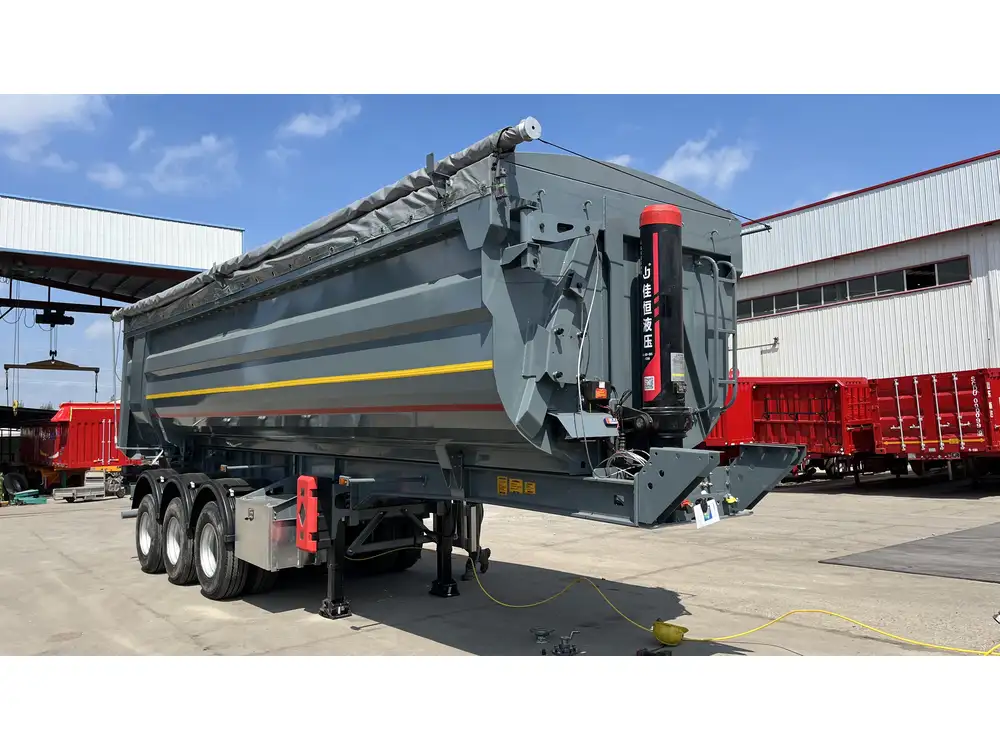Skeletal trailers are the unsung heroes of the transportation sector, primarily utilized for the shipping of containers. The dimensions, specifically height, play an integral role in their functionality and compliance with legal regulations. In this detailed exploration, we will delve deep into the height of skeletal trailers, covering everything from standard measurements to implications on transport safety and efficiency.
What is a Skeletal Trailer?
A skeletal trailer, characterized by its minimalist design, comprises a basic framework capable of securing shipping containers. This trailer type is preferred for its lightweight and robust construction, allowing for versatile load handling. The essence of its simplicity not only promotes easy loading and unloading but also enhances aerodynamics, improving fuel efficiency on the road.
The Design Aspects of Skeletal Trailers
| Feature | Description |
|---|---|
| Frame Material | Often constructed from high-strength steel or aluminum for durability. |
| Axles | Generally features two to three axles, influencing height and stability. |
| Height Adjustment | Some models offer adjustable heights to accommodate various container types. |

The Standard Height of Skeletal Trailers
The standard height of skeletal trailers predominantly spans from 1,200 mm to 1,400 mm when unloaded. Three critical factors influence these measurements:
Container Specifications: Common container sizes (20′, 40′) have specific height requirements. Skeletal trailers must align with these dimensions for optimal compatibility.
Legal Regulations: Height limitations are imposed by various regulatory bodies to ensure road safety. In many regions, the maximum permissible height for vehicles, including trailers, does not exceed 4.5 meters (approximately 14.76 feet) from the ground to the trailer top when loaded.
Design Optimization: Manufacturers often engage in advanced engineering to optimize trailer height to maximize container transport efficiency while maintaining compliance with safety regulations.
Height Variability for Different Models
The variability in the height of skeletal trailers can be attributed to model design and intended function. Below are common types:
| Trailer Type | Height Range (mm) | Typical Use Case |
|---|---|---|
| Standard Skeletal | 1,200 – 1,400 | General container transport |
| Low-Profile Skeletal | 800 – 1,000 | Heavy cargo transport requiring lowered center of gravity |
| Adjustable Skeletal | 1,200 – 1,600 | Versatile transport needs with adjustable heights |
Implications of Height on Transport Efficiency
The height of skeletal trailers significantly impacts various facets of transportation:

1. Aerodynamics and Fuel Efficiency
A lower trailer height can enhance aerodynamics, which contributes to fuel efficiency. The reduced air resistance at lower heights can lead to significant cost savings over long transports, particularly in a market where fuel prices are volatile.
2. Stability and Safety
The center of gravity plays a pivotal role in vehicle stability. Taller trailers may pose risks of tipping, particularly when navigating sharp turns or adverse weather. Lowering the height can enhance stability, leading to safer transportation of goods.
3. Loading and Unloading Dynamics
Loading and unloading operations are directly influenced by trailer height. A trailer that is too high can complicate these operations unless equipped with ramps or specialized loading equipment. Conversely, optimum height enhances logistical efficiency, reducing loading times and labor costs.

Legal Regulations to Consider
Transport regulations vary regionally but adhering to specific height mandates, such as:
- Interstate Limits: Most U.S. states enforce maximum height limits, generally around 13.5 to 14 feet.
- European Union Standards: Compliance with the EU regulations typically caps trailers at a maximum height of 4 meters.
Non-compliance can lead to penalties and further reputational damage within the logistics sector.
Conclusion — Making Informed Decisions
When selecting a skeletal trailer, understanding the height’s role is paramount. From facilitating efficient transport operations to ensuring compliance with regulations, the height significantly influences functionality.
For manufacturers, it is crucial to balance height with other design elements to cater to the diverse needs of clients. By adhering to industry standards and technical advancements, it is possible to deliver skeletal trailers that not only meet but exceed the expectations of the market.
In summary, thorough knowledge about the height of skeletal trailers, their standard measurements, and total implications helps businesses thrive in the competitive logistics arena. By focusing on these dimensions, manufacturers can enhance product offerings, improve user safety, and streamline operational efficiency.
Additional Resources
For further insights into compliant transportation solutions, consider exploring:
- Container Specifications and Standards
- Logistics Management for Sustainable Transport
- Innovations in Trailer Design

FAQs
What is the maximum height for a skeletal trailer in the U.S.? The maximum height limit for a skeletal trailer generally falls between 13.5 to 14 feet, depending on state laws.
How does height affect the loading capacity of a skeletal trailer? The height can directly influence how easy or challenging it is to load and unload trailers, affecting operational efficiency.
Are there adjustable height models? Yes, some manufacturers produce adjustable skeletal trailers to cater to varying transport needs effectively.
What are the advantages of low-profile skeletal trailers? These trailers offer enhanced stability, reduced wind resistance, and lower loading heights for specific cargo types.
How can I ensure my trailer remains compliant with height regulations? Regular assessments and adhering to local transportation laws ensure compliance and enhance safety on roads.
By leveraging advanced techniques and continual innovation, we maintain our commitment to providing superior skeletal trailers tailored to facilitate seamless transportation solutions across vast landscapes.



